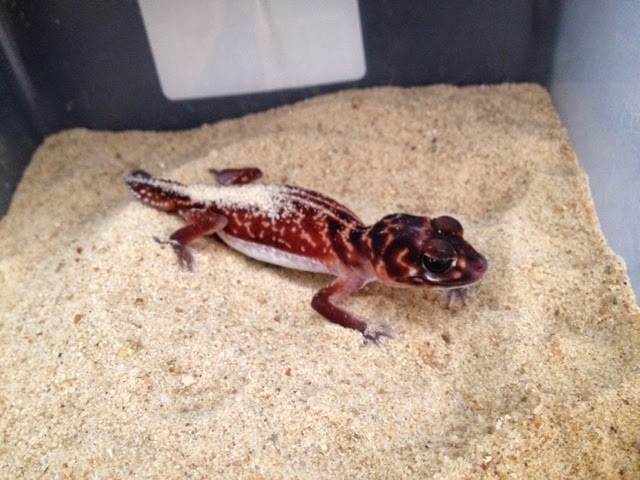Friday, May 30, 2014
Here is just another contribution to geckotime.com
I figured that I would send a link here for some writing I had done within the past few weeks about major changes to husbandry. Scroll down towards the bottom to see my part. It's an interesting read, not just my write up! ;)
http://www.geckotime.com/gecko-husbandry-changes-part-2/
Tuesday, May 27, 2014
Week #12......Diploglossus millepunctatus
This spotted galliwasp is one of the cooler skinks I have seen in collections. Indigenous exclusively to the Malpelo island of Columbia, this lizard is a strict carnivore. I just read on wikipedia that Malpelo island is void of trees, and feeds on crabs and seabirds, as well as guano! That's pretty interesting I thought!
Again, special thanks to Steve Cemelli of www.leapingleachies.com for allowing me to photograph his collection. It's sometimes not easy to get photos of 52 alternate species. Twice none the less.
Monday, May 26, 2014
Week #11 Phyllobates terribilis!
So, this week I'm bringing to you one of my favorite amphibian frog species, the terrible dart frog. The ones pictures here are of the mint variety, but I personally like the yellow and the orange types just as much. These frogs will try and consume just about anything they can fit in their mouths as you can see from the video, and they are not skittish to say the least. They are always out and in the middle of everything. Special thanks to Steve Cemelli of www.leapinleachies.com for allowing me to video his collection. Enjoy the pictures and videos. Don't be afraid to comment! Oli
Monday, May 19, 2014
Week #10 Nephrurus vertebralis!
Here, again, I'm bringing another knob tailed gecko to the 2nd 52 week countdown. This may be the last knob tail species of the countdown, so I had to make it a good one. This gecko, like all other Nephrurus is indigenous to Australia. It miraculously popped up in the reptile hobby approximately 7 years ago, and has been coveted ever since! Hardy, beautiful, as well as prolific make this captive very sought after. Enjoy these pictures of my animals.
Thursday, May 15, 2014
Week #9. Colopus wahlbergi furcifer


For week nine I'm coming up with a gecko from the genus Colopus, indigenous to the Kalahari desert, specifically Namibia. Commonly named as a "Kalahari ground gecko" this gecko possesses some nice dorsal stripes as opposed to the closely related Colopus wahlbergi wahlbergi which had more of an irregular back pattern. Special thanks to JT Baginski for these pictures of his current group. Enjoy.....Oli
Tuesday, May 13, 2014
Week #8 This week we have another Nephrurus species, Nephrurus asper.
Here we have yet another Australian gecko on the countdown, and again, another knob-tailed (Nephrurus) species. These are by far one of my favorite in the genus, and hopefully one day I will be fortunate enough to care for a group myself. This species can vary greatly in color depending on their native location. They can be black like the animals pictured below, but they can also be a reddish brown, somewhat similar to N. amyae, and they can also be a nice washed out grey with bands. All of them are exceptional. N. asper are smaller in size compared to N. amyae, which is known as the most massive Australian gecko. Enjoy the pictures below, they were taken by my friend JT Baginski.
| Nephrurus asper pair |
| Nephrurus amyae vs. Nephrurus asper comparison |
| comparison |
| Defensive posture |
| Two of my favorite species out of all geckos. |
Thursday, May 1, 2014
Week #7. Without a doubt this gecko needs to make the list...Nephrurus wheeleri cinctus
| Here is a close up so that their rosettes can be seen. You cannot see these in a lot of pictures I see on the web |
| Shedding N. wheeleri - phantom of the Opera scene |
Subscribe to:
Posts (Atom)













